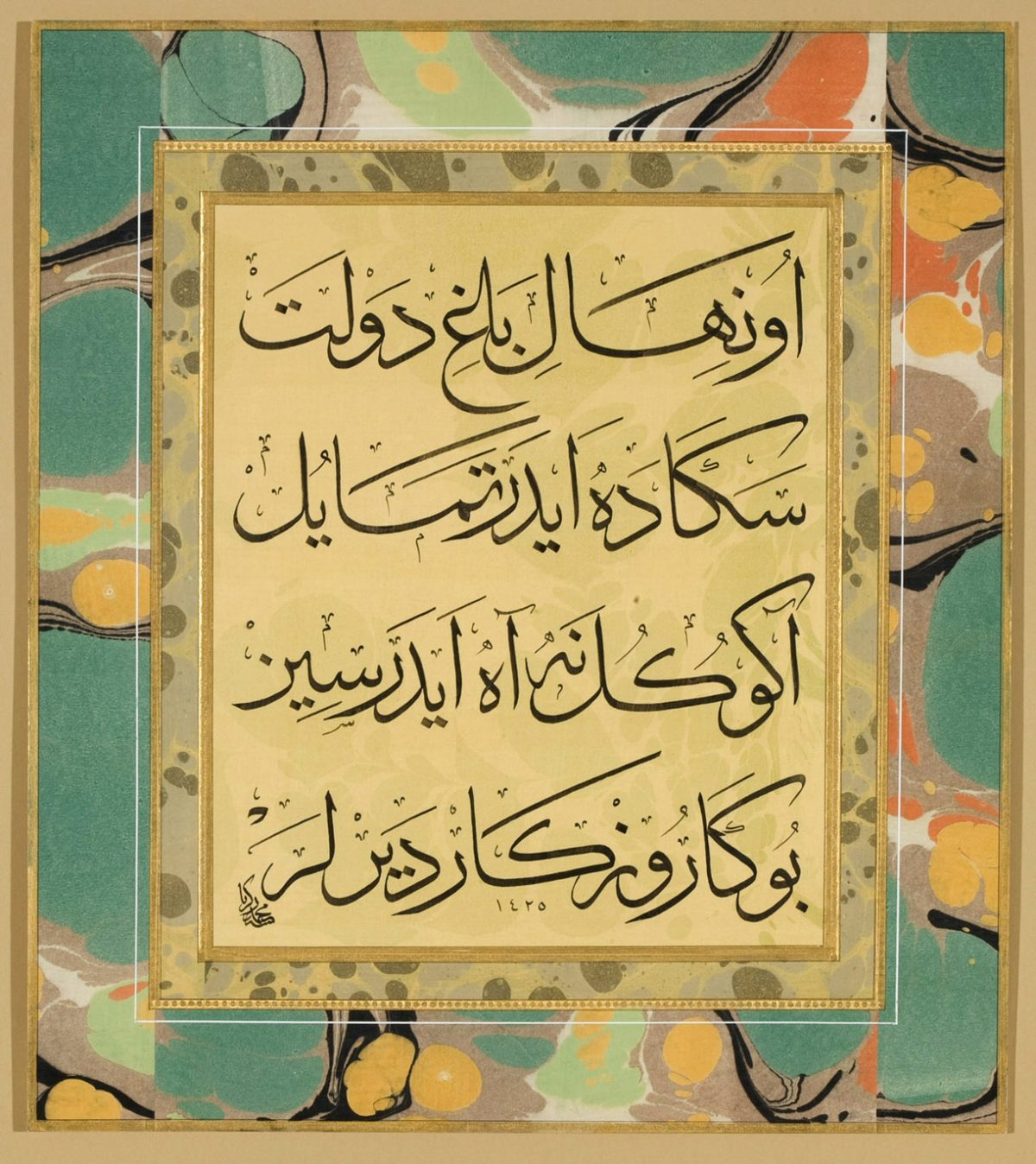Activity
Create a Personal Murakkaalar
Objective: Students create a murakkaalar (calligraphy album) of their name and adjectives that describe their personality written in Arabic. They will make a calligraphy reed and learn to write with it.

Garden of Happiness, an Ottoman Turkish Poem, 2004, by Mohamed Sakariya (American, born 1942).
Content Standards (California)
Materials
Arabic Alphabet handout
Rectangular cardboard
Light brown paper (pre-cut so the dimensions are smaller than the cardboard)
Tempura paint
Black ink
Decorative paper
Brushes
Glue
Lined paper
Scissors
X-acto knife
Sand paper
Black tape
Tongue depressors
Overview
Procedure
- As a class, examine Islamic calligraphy. Discuss with students the training process of apprentice calligraphers.
- Describe to students the religious and secular significance of calligraphy in Islamic art. Explain the materials, tools, and process of creating a calligraphic artwork. Emphasize to students the characteristics of Arabic writing: it is written only in cursive and is read from right to left, there are no capital letters, letters change form slightly depending on their position in the word, and short vowels are indicated by diacritical marks.
- Have students create a kit’alar and reed:
- Have students cut the end of a tongue depressor at angle about 35–40 degrees and then lightly sand it. On the cut end of the tongue depressor, make a one-inch slit using an exacto knife.
- Dip the “reed” into the ink. When writing, hold it similar to the way Western calligraphy pen. Practice writing the name using the ink and “reed.”
- Next, have students write their names name on the brown paper. Use a brush to touch up the letters.
- Using tempura ink, plain flower and plant motifs around the letters. Set it aside to dry.
- Cut a piece of decorative paper so it is one inch larger that the cardboard. Paste it onto the cardboard. Fold over the edges and glue them down.
- Have students paste their paintings in the center of the wrapped cardboard.
- Have students look up three adjectives that describe their personalities in an Arabic dictionary. Make a separate kit’alar for each of these words.
- Place the total of four kit’alar on the table with the one with your name on the far right. Tape them together with black tape.
- Turn them over and glue the bare side of the sections with decorative paper.
- Fold the sections together to make a small album.




